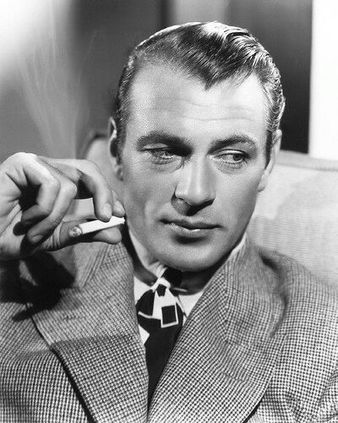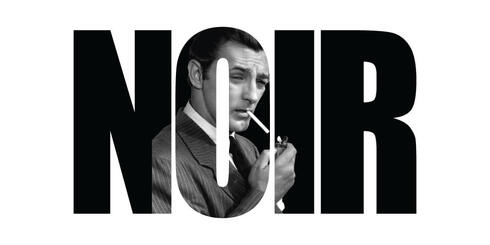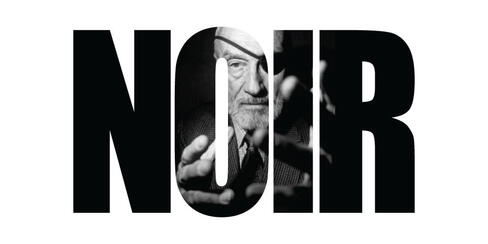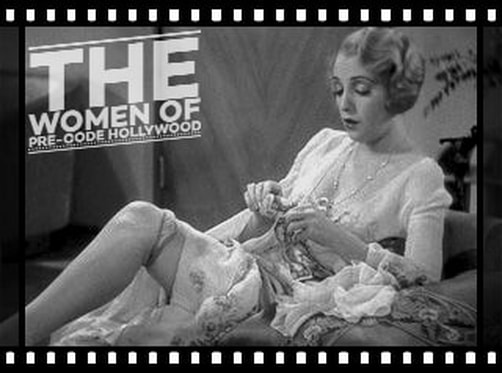
Gary Cooper
Active - 1925 - 1961 | Born - May 7, 1901 in Helena, MT | Died - May 13, 1961 in Beverly Hills, CA | Genres - Drama, Western, Romance, Action, Adventure | Height: 6’ 3”
American actor Gary Cooper was born on the Montana ranch of his wealthy father, and educated in a prestigious school in England -- a dichotomy that may explain how the adult Cooper was able to combine the ruggedness of the frontiersman with the poise of a cultured gentleman. Injured in an auto accident while attending Wesleyan College, he convalesced on his dad’s ranch, perfecting the riding skills that would see him through many a future Western film.
After trying to make a living at his chosen avocation of political cartooning, Cooper was encouraged by two friends to seek employment as a cowboy extra in movies. Agent Nan Collins felt she could get more prestigious work for the handsome, gangling Cooper, and, in 1926, she was instrumental in obtaining for the actor an important role in The Winning of Barbara Worth. Movie star Clara Bow also took an interest in Cooper, seeing to it that he was cast in a couple of her films. Cooper really couldn’t act at this point, but he applied himself to his work in a brief series of silent Westerns for his home studio, Paramount Pictures, and, by 1929, both his acting expertise and his popularity had soared. Cooper’s first talking-picture success was The Virginian (1929), in which he developed the taciturn, laconic speech patterns that became fodder for every impressionist on radio, nightclubs, and television.
Cooper alternated between tie-and-tails parts in Design for Living (1933) and he-man adventurer roles in The Lives of a Bengal Lancer (1935) for most of the 1930s; in 1941, he was honored with an Oscar for Sergeant York, a part for which he was the personal choice of the real-life title character, World War I hero Alvin York. One year later, Cooper scored in another film biography, Pride of the Yankees. As baseball great Lou Gehrig, the actor was utterly convincing (despite the fact that he’d never played baseball and wasn’t a southpaw like Gehrig), and left few dry eyes in the audiences with his fade-out “luckiest man on the face of the earth” speech. In 1933,
Ignoring the actor’s indirect participation in the communist witch-hunt of the 1940s, Hollywood held Cooper in the highest regard as an actor and a man. Even those co-workers who thought that Cooper wasn’t exerting himself at all when filming were amazed to see how, in the final product, Cooper was actually out-acting everyone else, albeit in a subtle, unobtrusive manner. Consigned mostly to Westerns by the 1950s (including the classic High Noon [1952]), Cooper retained his box-office stature. Privately, however, he was plagued with painful, recurring illnesses, and one of them developed into lung cancer. Discovering the extent of his sickness, Cooper kept the news secret, although hints of his condition were accidentally blurted out by his close friend Jimmy Stewart during the 1961 Academy Awards ceremony, where Stewart was accepting a career-achievement Oscar for Cooper.
Available Films:
Active - 1925 - 1961 | Born - May 7, 1901 in Helena, MT | Died - May 13, 1961 in Beverly Hills, CA | Genres - Drama, Western, Romance, Action, Adventure | Height: 6’ 3”
American actor Gary Cooper was born on the Montana ranch of his wealthy father, and educated in a prestigious school in England -- a dichotomy that may explain how the adult Cooper was able to combine the ruggedness of the frontiersman with the poise of a cultured gentleman. Injured in an auto accident while attending Wesleyan College, he convalesced on his dad’s ranch, perfecting the riding skills that would see him through many a future Western film.
After trying to make a living at his chosen avocation of political cartooning, Cooper was encouraged by two friends to seek employment as a cowboy extra in movies. Agent Nan Collins felt she could get more prestigious work for the handsome, gangling Cooper, and, in 1926, she was instrumental in obtaining for the actor an important role in The Winning of Barbara Worth. Movie star Clara Bow also took an interest in Cooper, seeing to it that he was cast in a couple of her films. Cooper really couldn’t act at this point, but he applied himself to his work in a brief series of silent Westerns for his home studio, Paramount Pictures, and, by 1929, both his acting expertise and his popularity had soared. Cooper’s first talking-picture success was The Virginian (1929), in which he developed the taciturn, laconic speech patterns that became fodder for every impressionist on radio, nightclubs, and television.
Cooper alternated between tie-and-tails parts in Design for Living (1933) and he-man adventurer roles in The Lives of a Bengal Lancer (1935) for most of the 1930s; in 1941, he was honored with an Oscar for Sergeant York, a part for which he was the personal choice of the real-life title character, World War I hero Alvin York. One year later, Cooper scored in another film biography, Pride of the Yankees. As baseball great Lou Gehrig, the actor was utterly convincing (despite the fact that he’d never played baseball and wasn’t a southpaw like Gehrig), and left few dry eyes in the audiences with his fade-out “luckiest man on the face of the earth” speech. In 1933,
Ignoring the actor’s indirect participation in the communist witch-hunt of the 1940s, Hollywood held Cooper in the highest regard as an actor and a man. Even those co-workers who thought that Cooper wasn’t exerting himself at all when filming were amazed to see how, in the final product, Cooper was actually out-acting everyone else, albeit in a subtle, unobtrusive manner. Consigned mostly to Westerns by the 1950s (including the classic High Noon [1952]), Cooper retained his box-office stature. Privately, however, he was plagued with painful, recurring illnesses, and one of them developed into lung cancer. Discovering the extent of his sickness, Cooper kept the news secret, although hints of his condition were accidentally blurted out by his close friend Jimmy Stewart during the 1961 Academy Awards ceremony, where Stewart was accepting a career-achievement Oscar for Cooper.
Available Films:
BALL OF FIRE CITY STREETS CLOAK AND DAGGER DESIRE DEVIL AND THE DEEP |
DISTANT DRUMS FAREWELL TO ARMS, A FOUNTAINHEAD, THE GARDEN OF EVIL HIGH NOON |
IF I HAD A MILLION LIVES OF A BENGAL LANCER MAN OF THE WEST MEET JOHN DOE MOROCCO |
ONE SUNDAY AFTERNOON STAR BIO: JOHN GARFIELD / GARY COOPER TODAY WE LIVE WESTERNER, THE |
Trivia:
Appeared in three movies with Barbara Stanwyck, Ball of Fire (1941), Meet John Doe (1941) and Blowing Wild (1953).
Appeared in eight movies with Walter Brennan. These were Watch Your Wife (1926), The Wedding Night (1935), The Cowboy and the Lady (1938), The Westerner (1940), Meet John Doe (1941), Sergeant York (1941), The Pride of the Yankees (1942) and Task Force (1949).
He wasn't present to receive his Academy Award in February 1953, for his portrayal of Marshal Will Kane in High Noon (1952). He asked John Wayne to accept it on his behalf.
Was close friends with Ernest Hemingway for 20 years. Hemingway shot himself a month after Cooper's death.
He declined roles in The Big Trail (1930), Stagecoach (1939) and Red River (1948). All of these were subsequently played by John Wayne.
It was a testament to his durability that Charlton Heston, already a major star following The Ten Commandments (1956), was prepared to play a supporting role in The Wreck of the Mary Deare (1959). Heston was impressed that the veteran actor, 58 years old and in declining health, was still able to perform his own stunts, including being submerged underwater for long periods of time. In his book "The Actor's Life", Heston recalled he sensed early on it would be Cooper's picture but he didn't mind, because of all Cooper himself had meant to Heston, even as a child.
His lovers included Clara Bow, Evelyn Brent, Carole Lombard, Lupe Velez, Ingrid Bergman, Grace Kelly, Marlene Dietrich and Patricia Neal. Sir Cecil Beaton also claimed to have had an affair with him.
[on turning down the role of Rhett Butler in Gone with the Wind (1939)] "Rhett Butler was one of the best roles ever offered in Hollywood and my screen character saw himself emerging from the film as a dashing-type fellow. But I said no. I didn't see myself as quite that dashing, and later, when I saw Clark Gable play the role to perfection, I knew I was right."
Often cited James Stewart as his closest friend.
Appeared in three movies with Barbara Stanwyck, Ball of Fire (1941), Meet John Doe (1941) and Blowing Wild (1953).
Appeared in eight movies with Walter Brennan. These were Watch Your Wife (1926), The Wedding Night (1935), The Cowboy and the Lady (1938), The Westerner (1940), Meet John Doe (1941), Sergeant York (1941), The Pride of the Yankees (1942) and Task Force (1949).
He wasn't present to receive his Academy Award in February 1953, for his portrayal of Marshal Will Kane in High Noon (1952). He asked John Wayne to accept it on his behalf.
Was close friends with Ernest Hemingway for 20 years. Hemingway shot himself a month after Cooper's death.
He declined roles in The Big Trail (1930), Stagecoach (1939) and Red River (1948). All of these were subsequently played by John Wayne.
It was a testament to his durability that Charlton Heston, already a major star following The Ten Commandments (1956), was prepared to play a supporting role in The Wreck of the Mary Deare (1959). Heston was impressed that the veteran actor, 58 years old and in declining health, was still able to perform his own stunts, including being submerged underwater for long periods of time. In his book "The Actor's Life", Heston recalled he sensed early on it would be Cooper's picture but he didn't mind, because of all Cooper himself had meant to Heston, even as a child.
His lovers included Clara Bow, Evelyn Brent, Carole Lombard, Lupe Velez, Ingrid Bergman, Grace Kelly, Marlene Dietrich and Patricia Neal. Sir Cecil Beaton also claimed to have had an affair with him.
[on turning down the role of Rhett Butler in Gone with the Wind (1939)] "Rhett Butler was one of the best roles ever offered in Hollywood and my screen character saw himself emerging from the film as a dashing-type fellow. But I said no. I didn't see myself as quite that dashing, and later, when I saw Clark Gable play the role to perfection, I knew I was right."
Often cited James Stewart as his closest friend.




